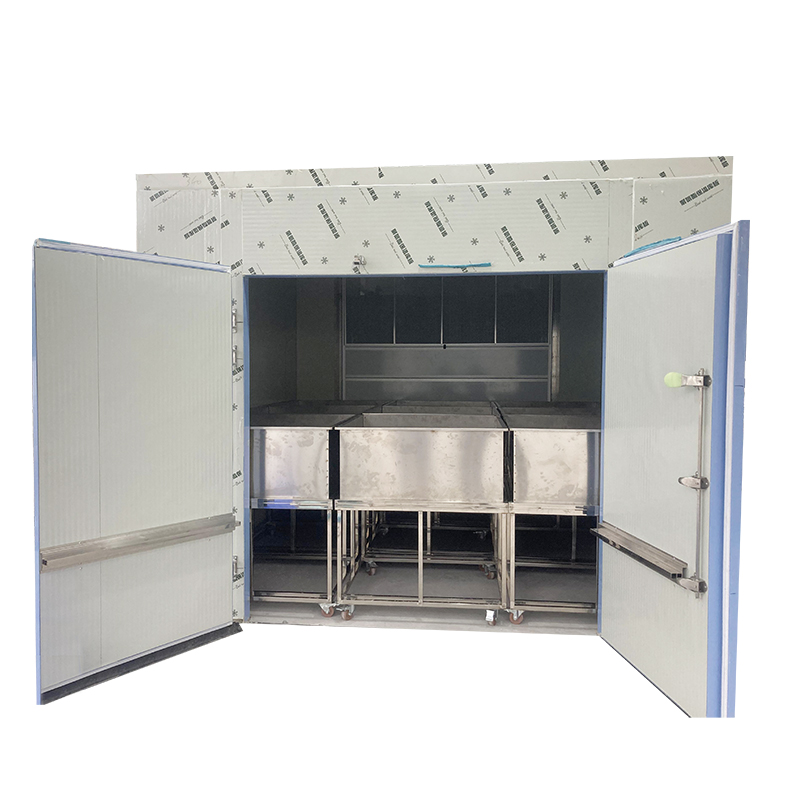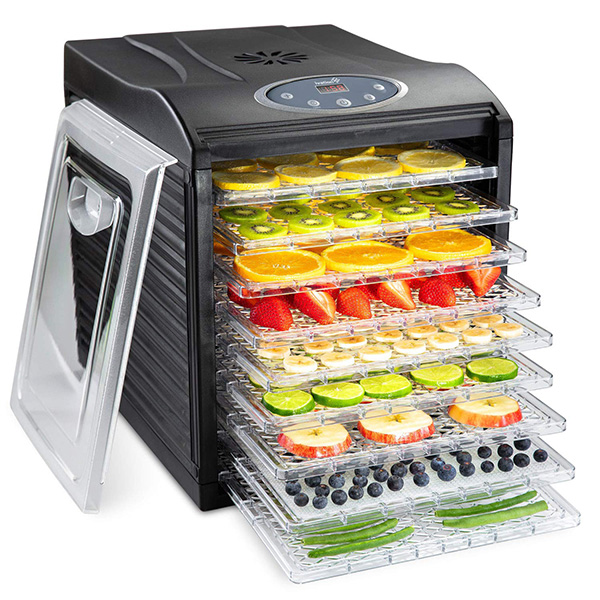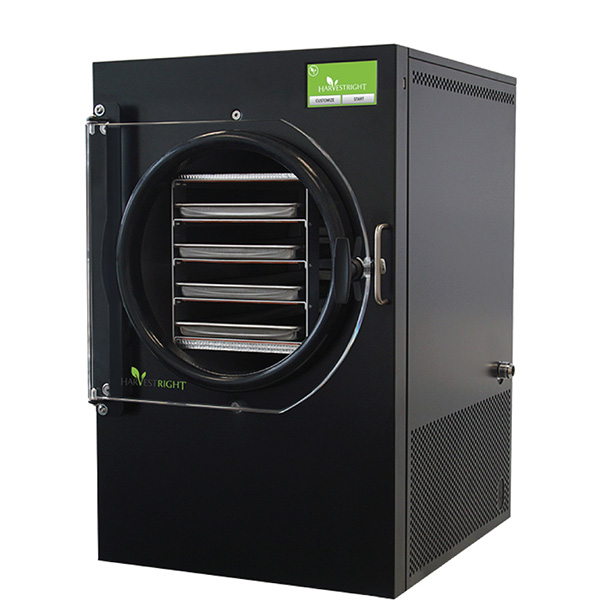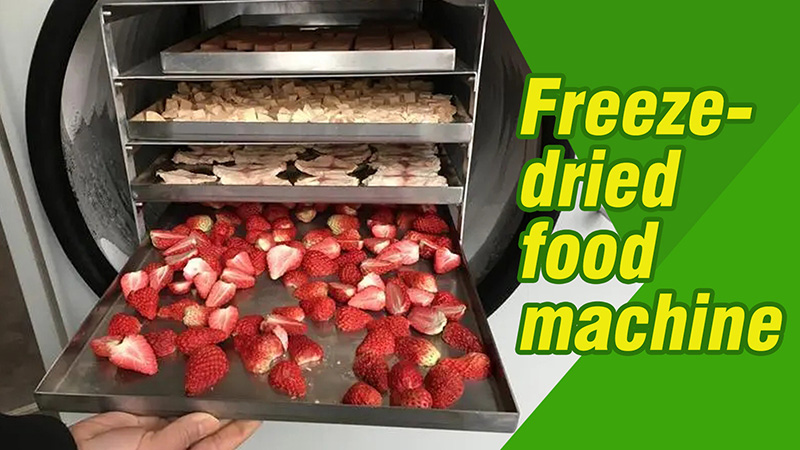
Content Menu
● Introduction to Freeze Drying
● Understanding the Freeze Drying Process
● The Rise of Home Freeze Dryers
● Benefits of Owning a Home Freeze Dryer
● Exploring Freeze-Dried Foods
>> Freeze-Dried Fruits and Vegetables
>> Freeze-Dried Meats
>> Freeze-Dried Dairy
>> Complete Freeze-Dried Meals
● Choosing the Right Freeze Dryer for Home Use
>> Freeze Dryer Capacity
>> Freeze Drying Equipment Features
>> Cost Considerations
● Tips for Successful Freeze Drying at Home
● Creative Uses for Your Home Freeze Dryer
● The Future of Home Food Preservation
● Conclusion
● Frequently Asked Questions
>> 1. Q: How long does the freeze drying process take?
>> 2. Q: Can all types of food be freeze-dried?
>> 3. Q: How do I store freeze-dried foods for long-term preservation?
>> 4. Q: Is freeze-dried food healthy?
>> 5. Q: How do I rehydrate freeze-dried food?
Introduction to Freeze Drying
Freeze drying, also known as lyophilization, is a cutting-edge food preservation method that has gained immense popularity among home cooks, preppers, and food enthusiasts. This process involves removing moisture from food while preserving its nutritional value, flavor, and texture. At the heart of this revolutionary technique is the home freeze dryer, a machine that has transformed the way we think about food storage and preservation.
Understanding the Freeze Drying Process
The freeze drying process is a marvel of modern food science. It consists of three main stages:
1. Freezing: The food is rapidly frozen to temperatures below -40°F (-40°C).
2. Primary drying: The surrounding pressure is lowered, and heat is applied to sublimate the frozen water directly into vapor.
3. Secondary drying: Any remaining bound water is removed by increasing the temperature.
This process results in food that retains up to 97% of its nutritional value while being shelf-stable for up to 25 years when properly packaged. The freeze drying equipment used in this process is a technological wonder, capable of preserving a wide variety of foods with minimal loss of quality.

The Rise of Home Freeze Dryers
In recent years, the availability of freeze dryers for home use has revolutionized food preservation for individuals and families. Companies like Harvest Right have made it possible for consumers to own their personal freeze drying machines, bringing commercial-grade technology into the home kitchen.
The Harvest Right freeze dryer, for example, comes in various sizes to accommodate different needs and budgets. From small units perfect for individuals or small families to larger models capable of processing substantial quantities of food, these machines have made long-term food storage more accessible than ever before.
Benefits of Owning a Home Freeze Dryer
Investing in a freeze dryer for home use offers numerous advantages:
1. Long-term food storage: Freeze-dried foods can last up to 25 years when properly stored, making them ideal for emergency preparedness.
2. Nutritional preservation: Unlike other preservation methods, freeze drying retains most of the food's original nutritional value.
3. Flavor and texture retention: Freeze-dried foods maintain their original taste and reconstitute to nearly their original texture when rehydrated.
4. Versatility: From fruits and vegetables to meats and complete meals, almost any food can be freeze-dried.
5. Cost savings: While the initial investment is significant, a home freeze dryer can save money in the long run by reducing food waste and allowing bulk purchases.
6. Customization: Create your own freeze-dried meals tailored to your dietary needs and preferences.
Exploring Freeze-Dried Foods
The world of freeze-dried foods is vast and exciting. Let's explore some popular categories:
Freeze-Dried Fruits and Vegetables
Fruits and vegetables are among the most commonly freeze-dried foods. The process locks in their natural sweetness and nutritional value, creating lightweight, crispy snacks that can be eaten as-is or rehydrated for use in cooking.Popular freeze-dried fruits include:
- Strawberries
- Bananas
- Apples
- Raspberries
- Mangoes
Vegetables that freeze-dry well include:
- Peas
- Corn
- Carrots
- Broccoli
- Bell peppers
Freeze-Dried Meats
Meats can be successfully freeze-dried, offering a protein-rich option for long-term storage. Popular choices include:
- Chicken
- Beef
- Turkey
- Fish
These can be used in a variety of recipes or eaten as high-protein snacks.
Freeze-Dried Dairy
Dairy products can also be freeze-dried, extending their shelf life significantly. Examples include:
- Cheese
- Yogurt
- Milk
These freeze-dried dairy products can be reconstituted for use in cooking or baking.
Complete Freeze-Dried Meals
One of the most exciting applications of freeze drying technology is the ability to preserve entire meals. This is particularly useful for outdoor enthusiasts, emergency preparedness, and busy individuals looking for quick, nutritious meal options. Examples of freeze-dried meals include:
- Pasta dishes
- Soups and stews
- Casseroles
- Breakfast foods like scrambled eggs and pancakes
Choosing the Right Freeze Dryer for Home Use
When selecting a freeze dryer for home use, several factors should be considered:
Freeze Dryer Capacity
Freeze dryers come in various sizes, each with different capacities. Consider your household size and how much food you plan to freeze dry regularly. Here are some common capacities:
- Small: Typically processes 4-7 pounds of fresh food per batch
- Medium: Can handle 7-10 pounds of fresh food per batch
- Large: Capable of processing 12-16 pounds of fresh food per batch
Freeze Drying Equipment Features
Look for features that enhance usability and efficiency:
- Programmable controls
- Transparent door for easy monitoring
- Automatic defrost function
- Built-in vacuum pump
- Energy-efficient operation
Cost Considerations
While home freeze dryers represent a significant investment, they can offer long-term savings. Prices typically range from $2,000 to $4,000 or more, depending on the size and features. Consider the potential savings on food preservation and the value of long-term food storage when evaluating the cost.

Tips for Successful Freeze Drying at Home
To get the most out of your home freeze dryer, consider these tips:
1. Pre-freeze foods when possible to reduce overall freeze drying time.
2. Cut foods into uniform sizes for even drying.
3. Leave space between food items on trays for efficient air circulation.
4. Use appropriate packaging materials (like Mylar bags with oxygen absorbers) for long-term storage.
5. Label all freeze-dried foods with contents and date of preservation.
6. Regularly maintain your freeze dryer according to the manufacturer's instructions.
Creative Uses for Your Home Freeze Dryer
Beyond basic food preservation, a home freeze dryer opens up a world of culinary possibilities:
1. Create your own instant meals for camping or backpacking trips.
2. Preserve seasonal fruits and vegetables at their peak freshness.
3. Make lightweight, nutritious snacks for children's lunchboxes.
4. Preserve herbs and spices to maintain their potency.
5. Create your own emergency food supply with a variety of nutritious options.
6. Experiment with freeze-dried ingredients in baking and cooking for unique textures and flavors.
The Future of Home Food Preservation
As technology continues to advance, we can expect to see even more innovations in home freeze drying equipment. Future developments may include:
- Smaller, more energy-efficient models
- Integration with smart home technology for remote monitoring and control
- Improved user interfaces for easier operation
- Faster processing times
- Enhanced customization options for different types of foods
The growing interest in sustainable living and food security suggests that home freeze drying will continue to gain popularity, becoming an essential tool in many households.
Conclusion
The machine for freeze drying food has revolutionized home food preservation, offering a way to store a wide variety of foods for extended periods while maintaining their nutritional value, flavor, and texture. Whether you're interested in long-term food storage, reducing food waste, or exploring new culinary possibilities, a home freeze dryer can be a valuable addition to your kitchen.
As we've explored in this guide, freeze drying opens up a world of possibilities for food preservation and preparation. From creating your own emergency food supply to experimenting with unique ingredients in your cooking, a home freeze dryer is a versatile tool that can enhance your culinary adventures and contribute to a more sustainable lifestyle.
With continued advancements in freeze drying technology, we can look forward to even more efficient and user-friendly machines in the future, making this remarkable food preservation method accessible to an ever-growing number of households.

Frequently Asked Questions
1. Q: How long does the freeze drying process take?
A: The freeze drying process typically takes between 20 to 40 hours, depending on the type and quantity of food being processed. Factors such as water content, thickness of the food, and the specific model of freeze dryer can affect the duration.
2. Q: Can all types of food be freeze-dried?
A: While most foods can be freeze-dried, some are better suited to the process than others. Foods with high fat content, such as avocados, may not freeze-dry well. However, fruits, vegetables, meats, dairy products, and even complete meals can be successfully freeze-dried.
3. Q: How do I store freeze-dried foods for long-term preservation?
A: For optimal long-term storage, package freeze-dried foods in airtight containers or Mylar bags with oxygen absorbers. Store them in a cool, dry place away from direct sunlight. When properly stored, freeze-dried foods can last up to 25 years.
4. Q: Is freeze-dried food healthy?
A: Yes, freeze-dried food retains up to 97% of its original nutritional value. The process preserves vitamins, minerals, and enzymes better than other preservation methods, making freeze-dried foods a healthy option.
5. Q: How do I rehydrate freeze-dried food?
A: To rehydrate freeze-dried food, simply add water. The amount of water needed will depend on the food item. Generally, you'll want to use slightly less water than the original water content of the food. Let the food sit in the water for a few minutes until it's fully rehydrated.












